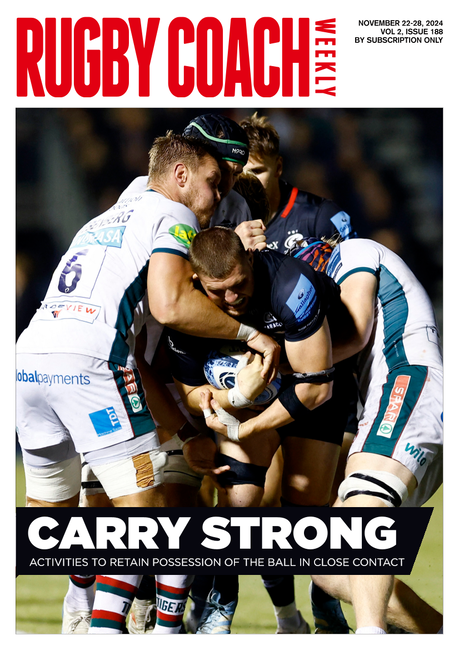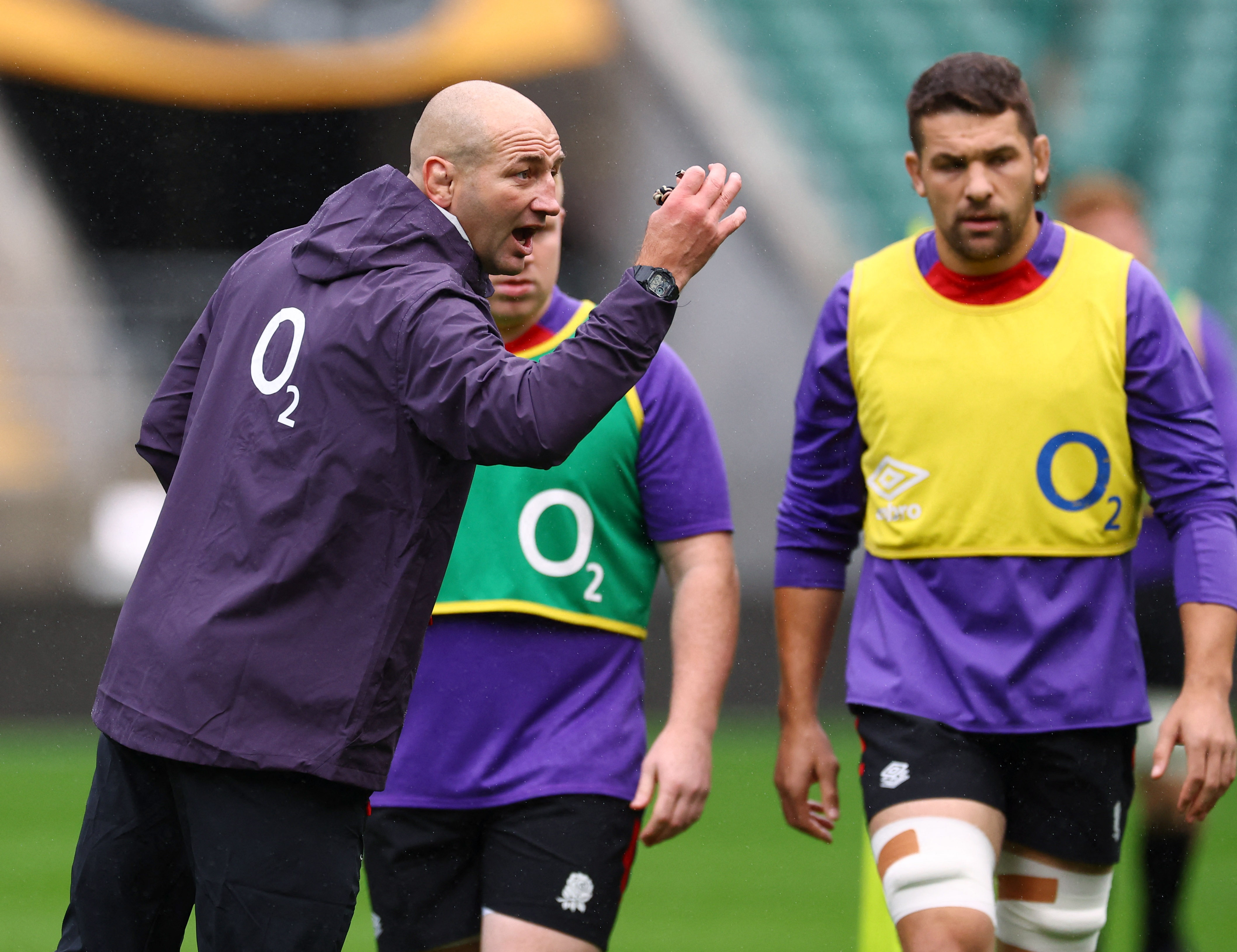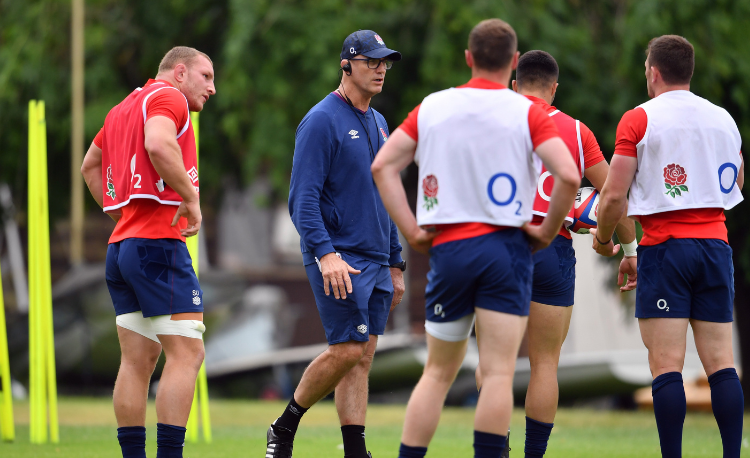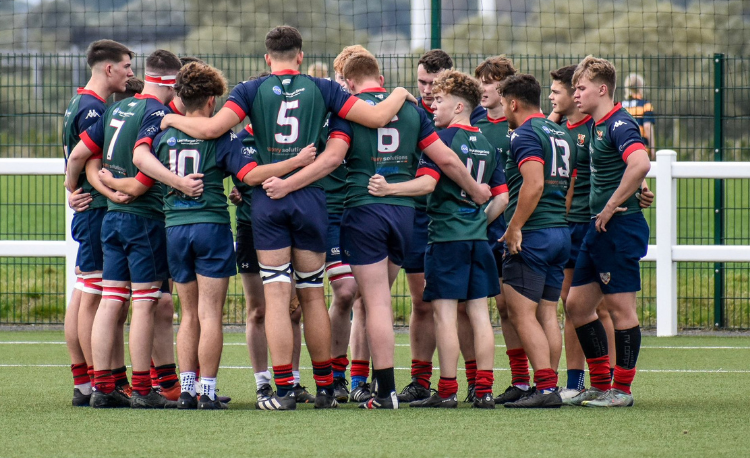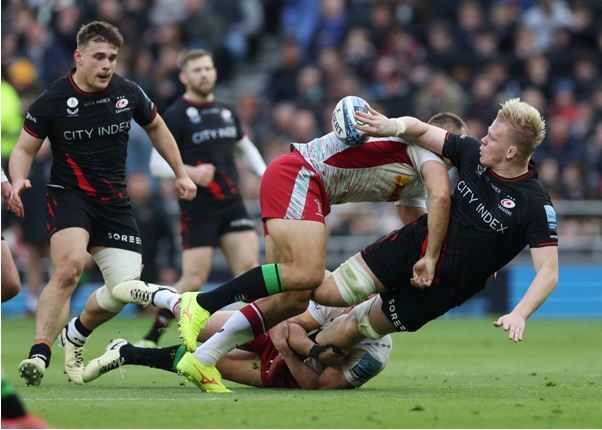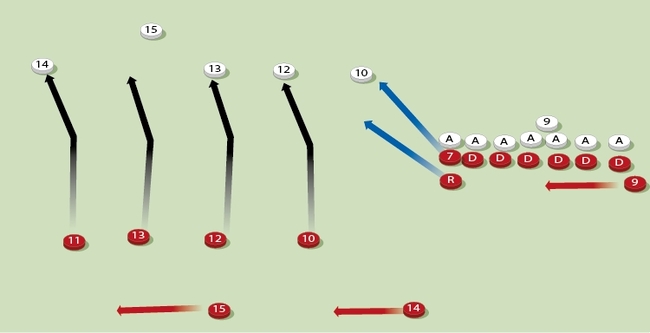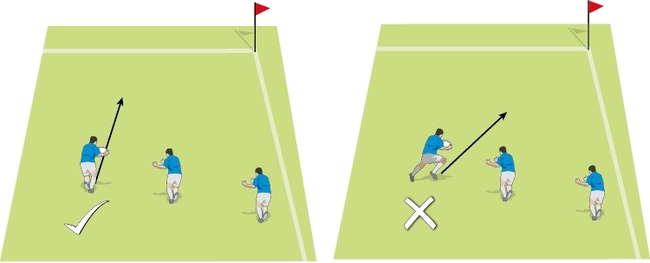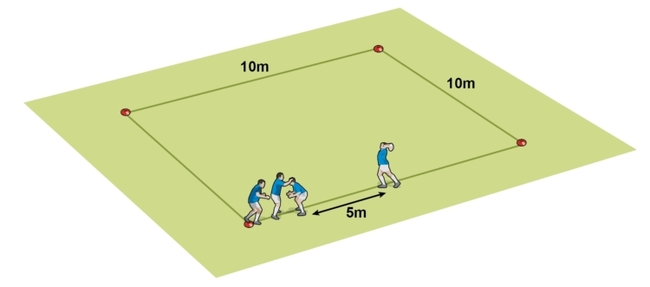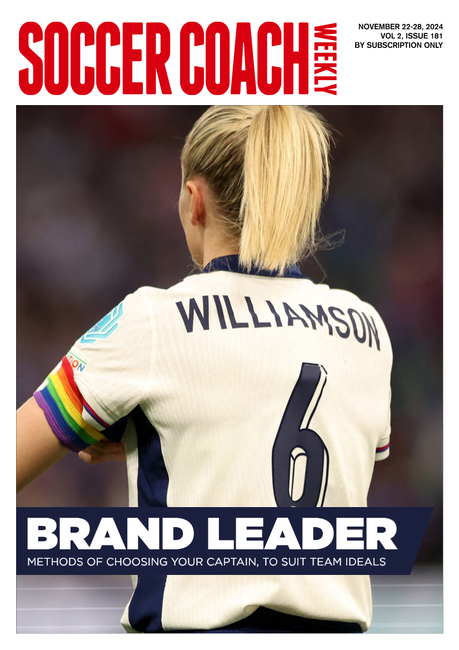Rugby coaching tips to improve player reaction times
Here are some exercises to help your players improve their reactions, which work hand-in-hand with anticipation.
Key factors to better reaction times
Motivation – A well-motivated player will react quicker than a player who is demotivated.
Cues – Players use visual and verbal cues or signals to decide what to do next. Their understanding of these cues will help them make quicker decisions.
Knowing – Constant practice will allow players to know what to do. It is all about "grooving" the body and mind to implement the technique.
Concentration – Being focused on the task will allow players to process the task more efficiently. Tiredness and dehydration reduce concentration levels.
Anxiety – A worried player will be uncertain about the right decision, leading to hesitation. Coaches need to reduce the stress levels.
Ideas for reaction sessions
1. Ground work
A player lies on his back on the ground. He throws a ball up and has to get to his feet before catching it.
2. Blind receipt and pass
A player stands between the goal posts with his eyes closed. Another player stands about 1m away. The player between the posts closes his eyes and puts his hands out.
The other player throws the ball to the "blind player" who has to catch and pass right so the ball hits the post. Repeat but with the pass going left.
3. Anticipation
Mark out two narrow columns side by side. Place three players holding pads or shields in the middle of the columns and about 5m apart, one behind the other. A ball carrier runs down the columns and tries to anticipate which way the bag man is going to step.
4. Colours
Mark out a 5m square (or a grid of boxes depending on the numbers at training). Inside the box have the players perform simple rugby exercises like pop passes, rips and side steps.
When you shout a colour, all the players have to sprint to a coloured cone outside the box and then return. Emphasise technique in the box and speed on the reaction to your call.
5. Two balls
Three players stand in a semi-circle about 2m apart, two with a ball. A fourth player (the "worker") stands 4m away from the three players.
One ball carrier passes to the worker who passes it back to the player without the ball. As soon as the worker has passed the ball, the other ball carrier passes and the worker repeats the catch and pass action.
This goes on for 10 passes before the players swap roles. Develop by having the worker run forwards and backwards over 3m before receiving each of the 10 passes.
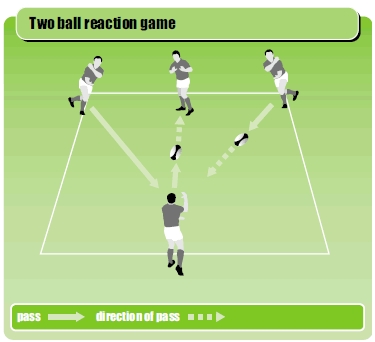
This article is from International Rugby Coaching.
Newsletter Sign Up
Coaches Testimonials

Gerald Kearney, Downtown Las Vegas Soccer Club

Paul Butler, Florida, USA

Rick Shields, Springboro, USA

Tony Green, Pierrefonds Titans, Quebec, Canada
Subscribe Today
Be a more effective, more successful rugby coach
In a recent survey 89% of subscribers said Rugby Coach Weekly makes them more confident, 91% said Rugby Coach Weekly makes them a more effective coach and 93% said Rugby Coach Weekly makes them more inspired.
Get Weekly Inspiration
All the latest techniques and approaches
Rugby Coach Weekly offers proven and easy to use rugby drills, coaching sessions, practice plans, small-sided games, warm-ups, training tips and advice.
We've been at the cutting edge of rugby coaching since we launched in 2005, creating resources for the grassroots youth coach, following best practice from around the world and insights from the professional game.


